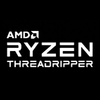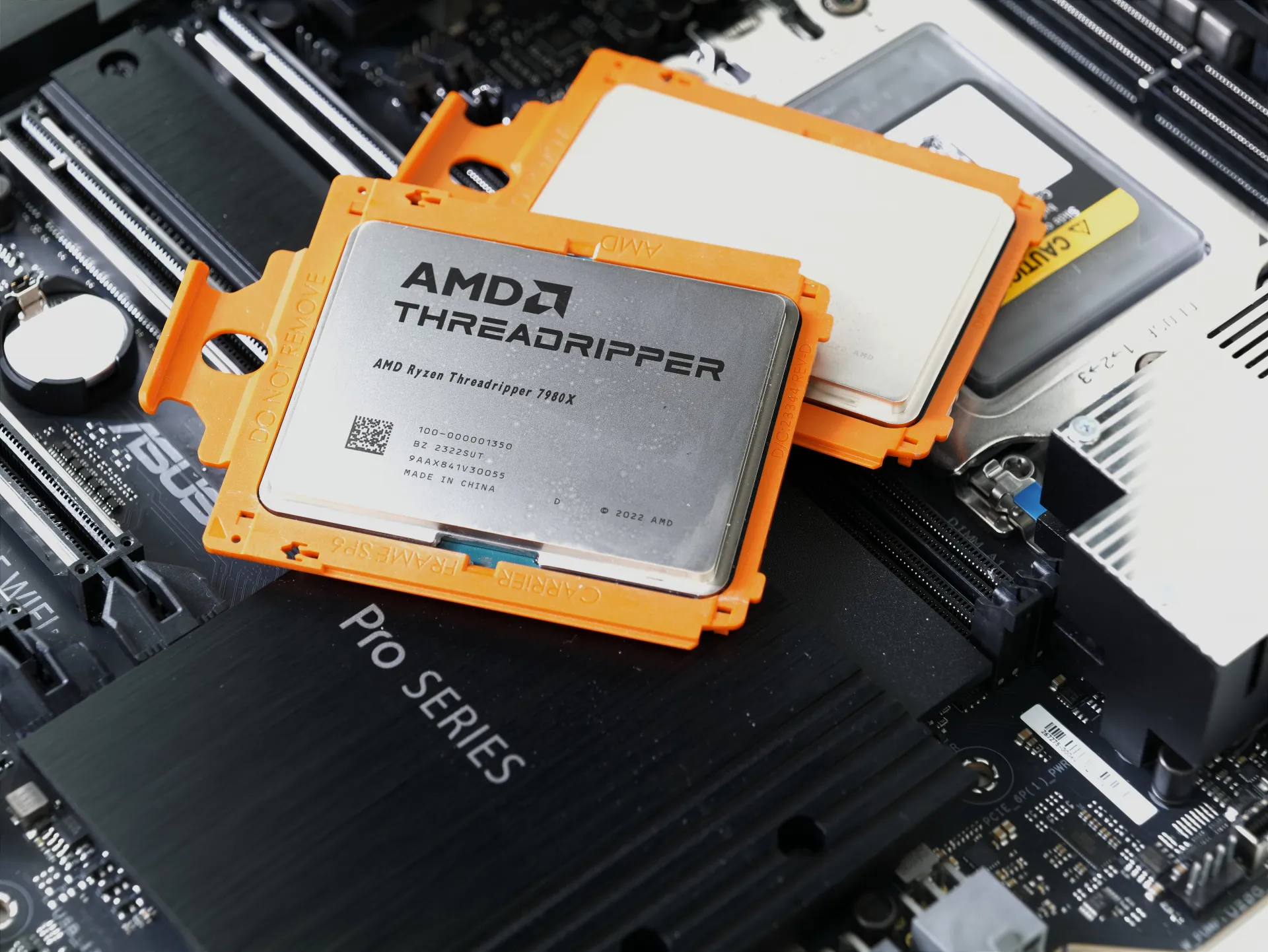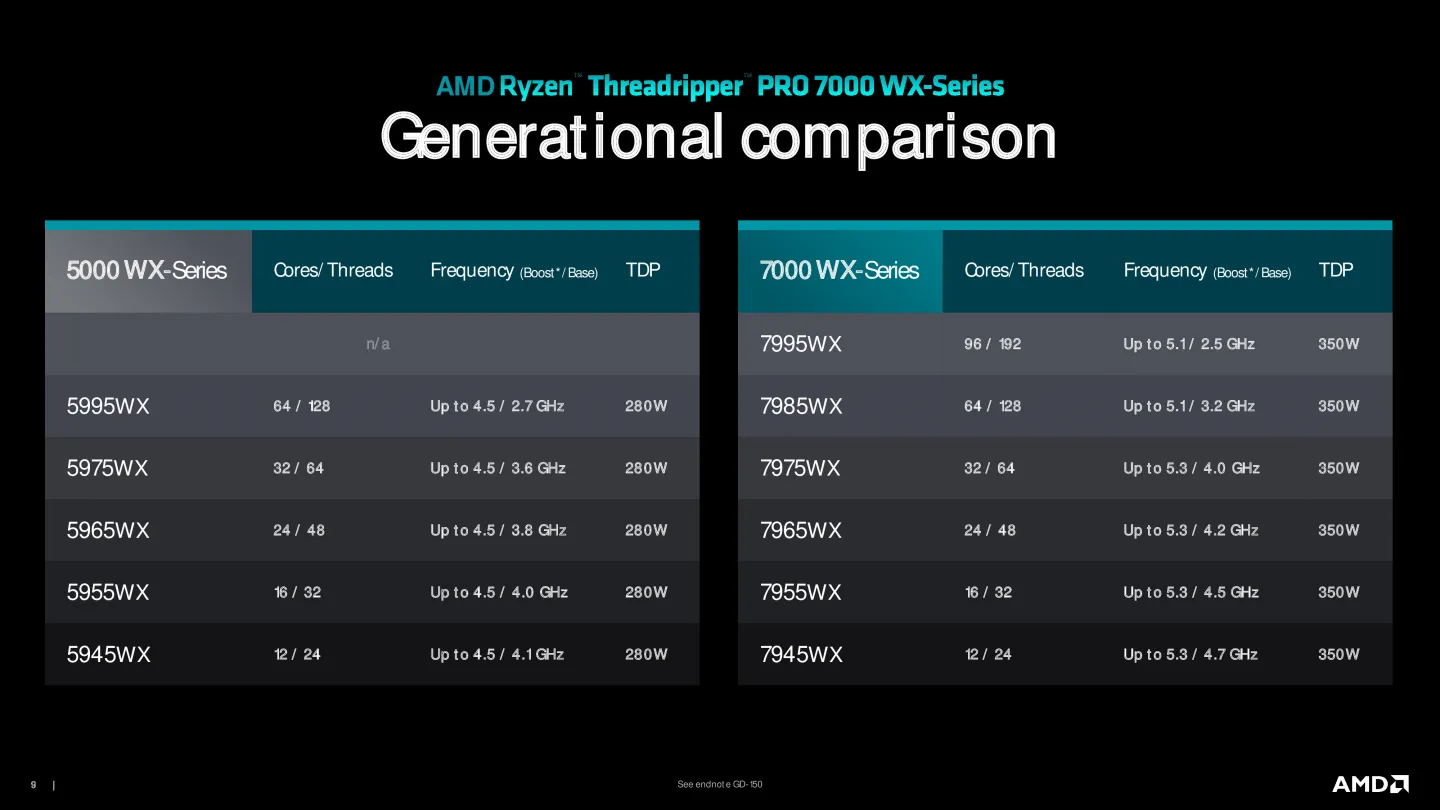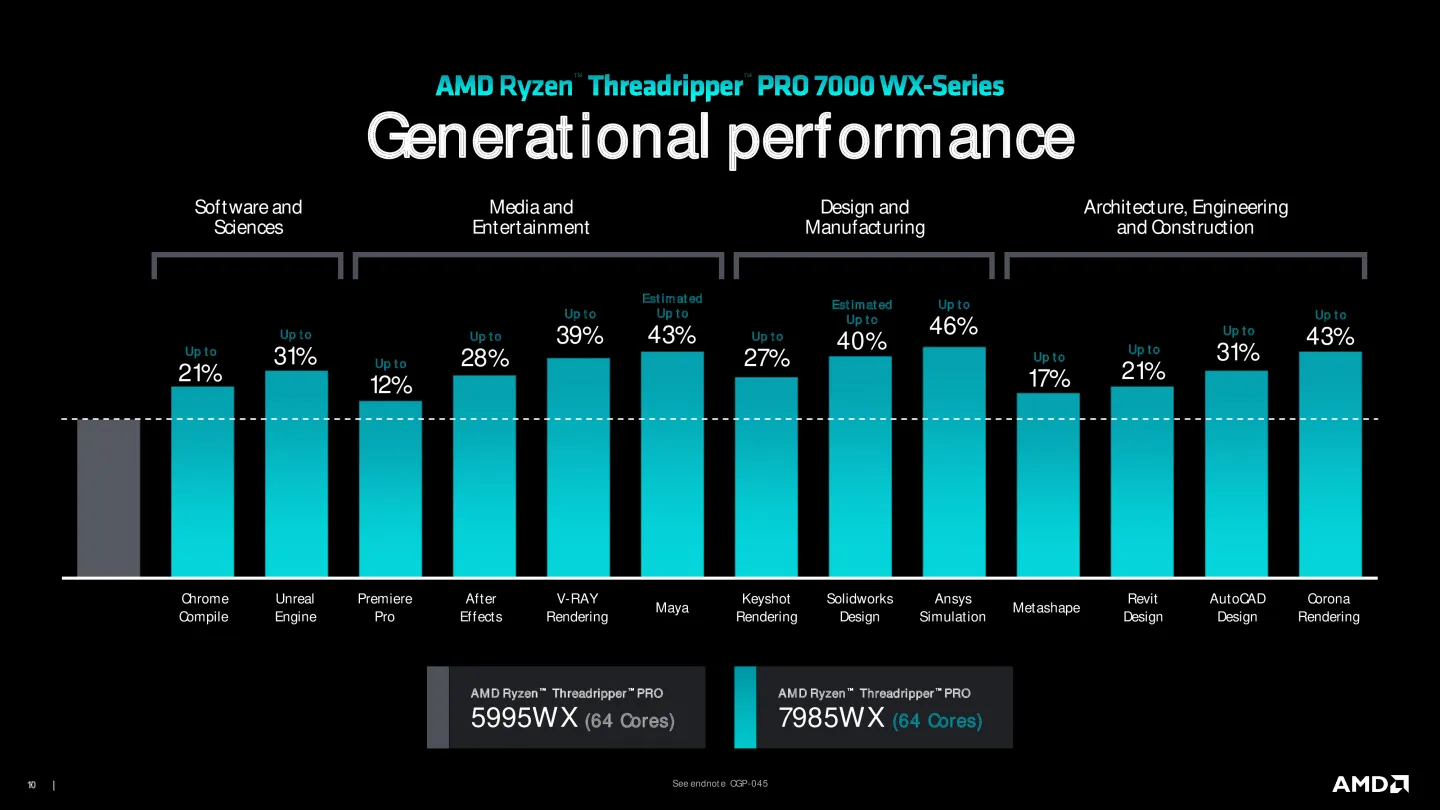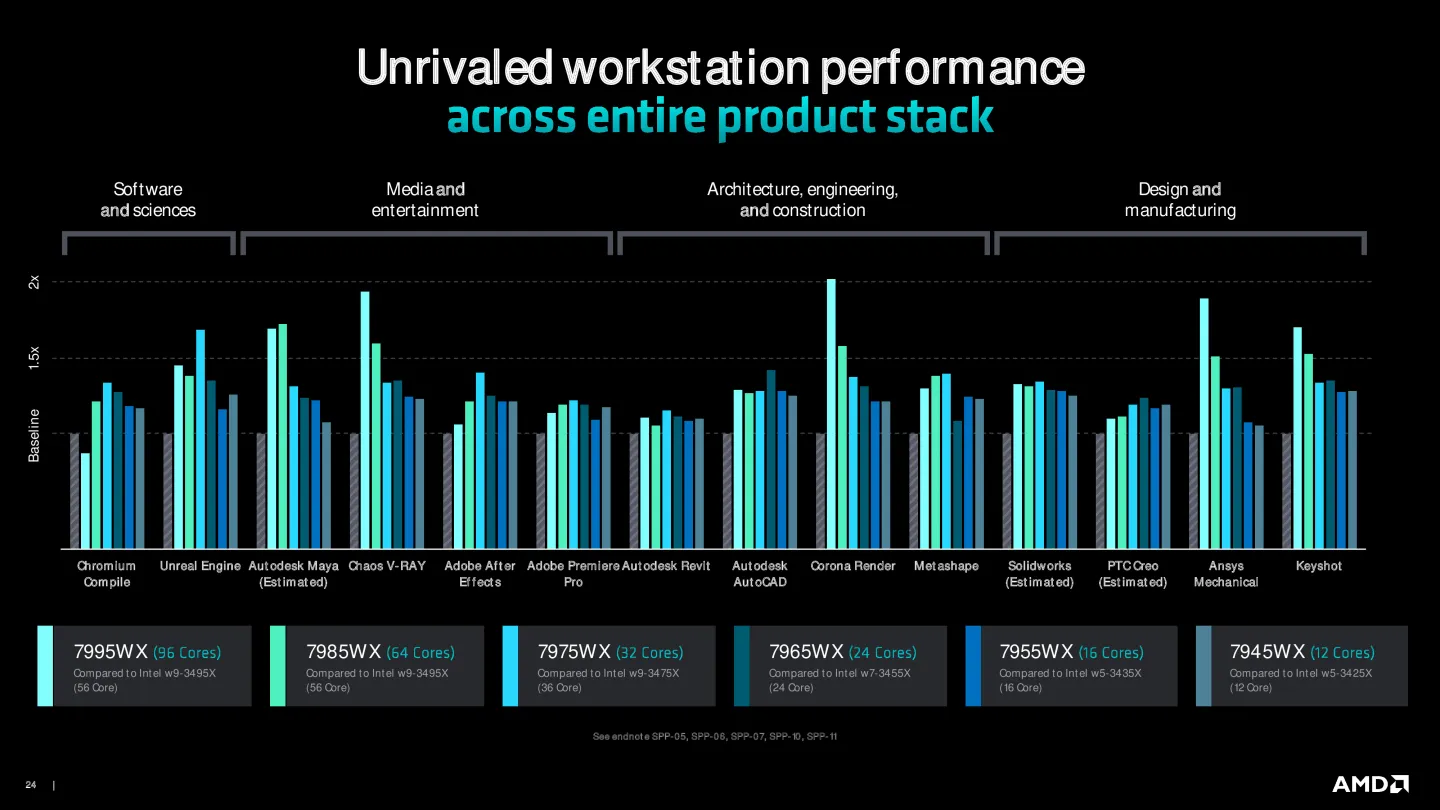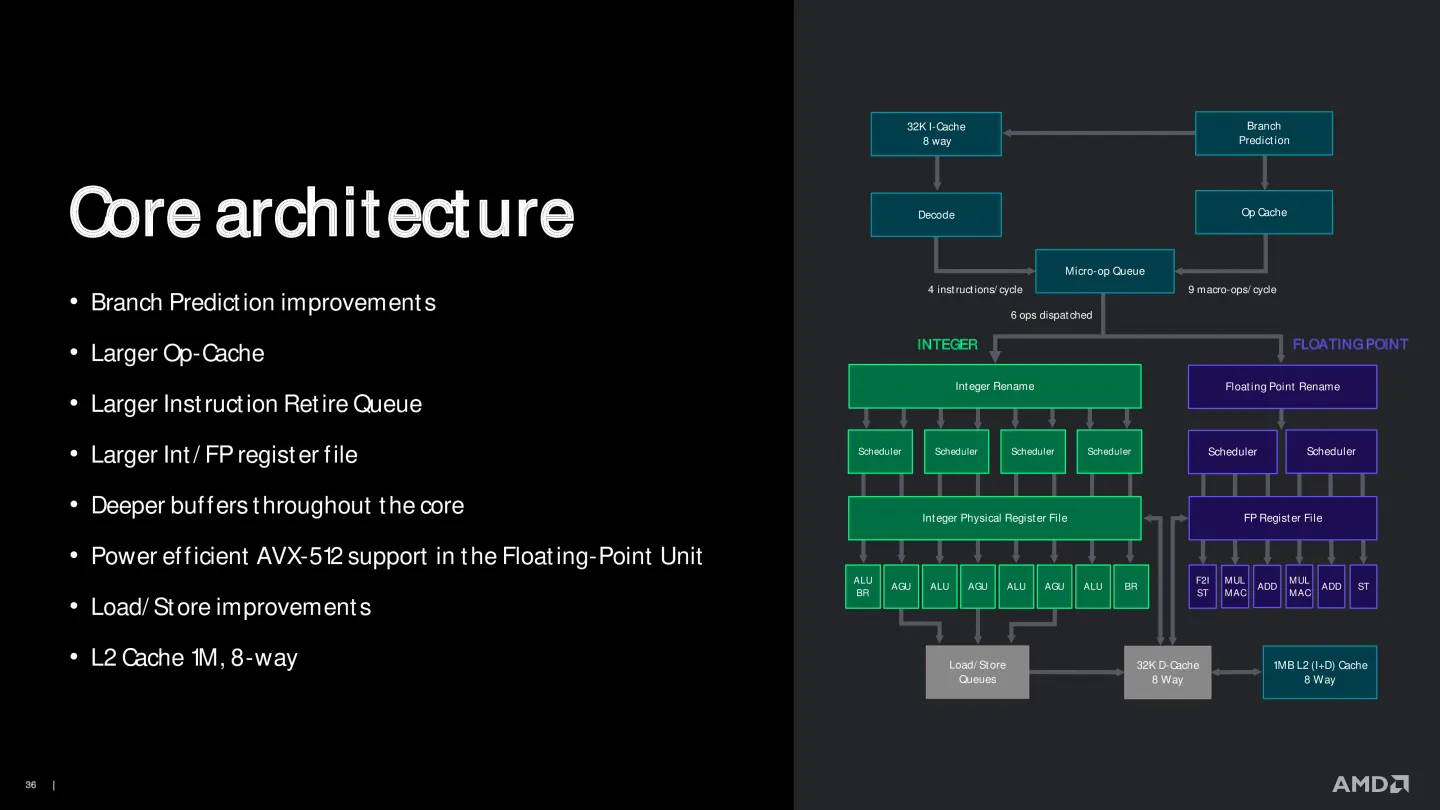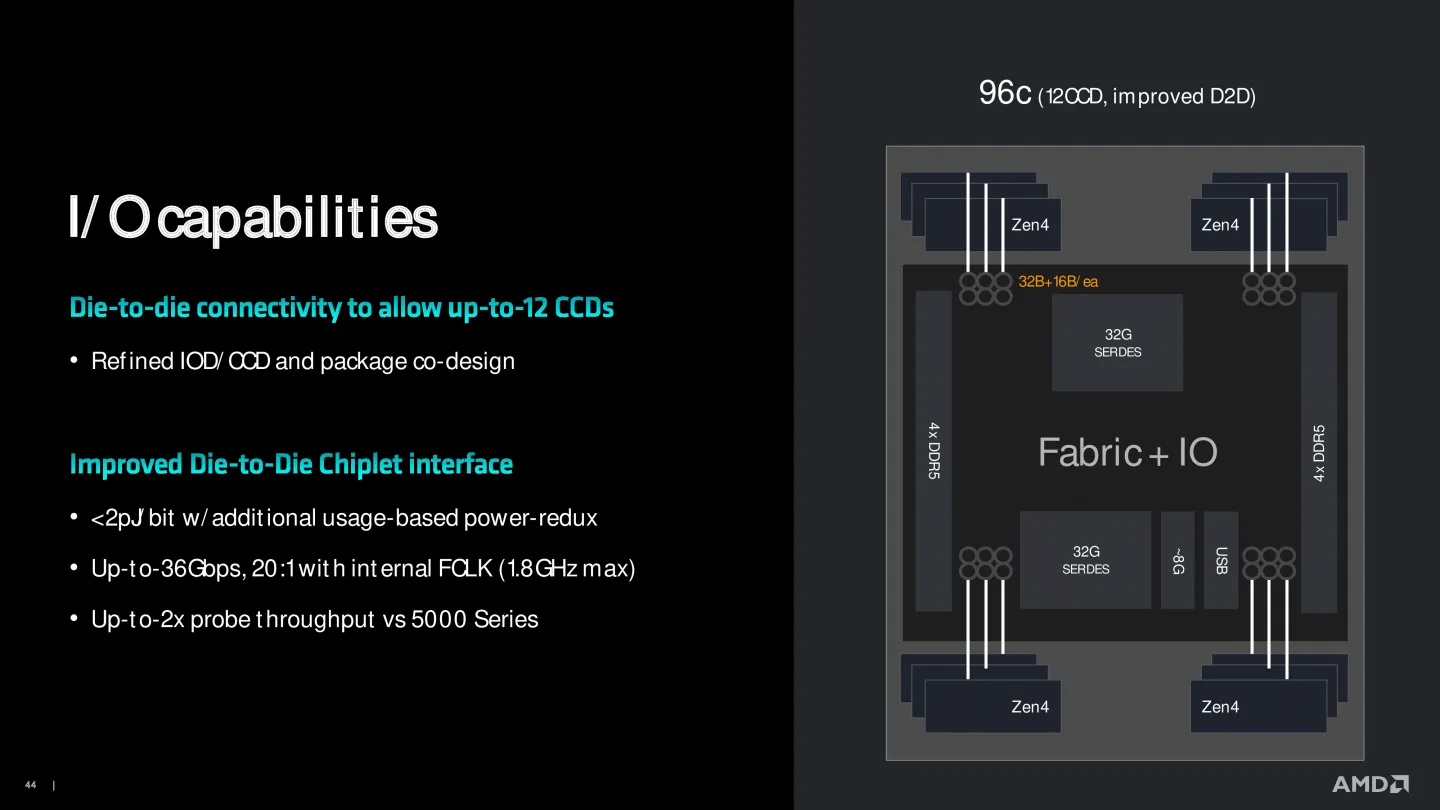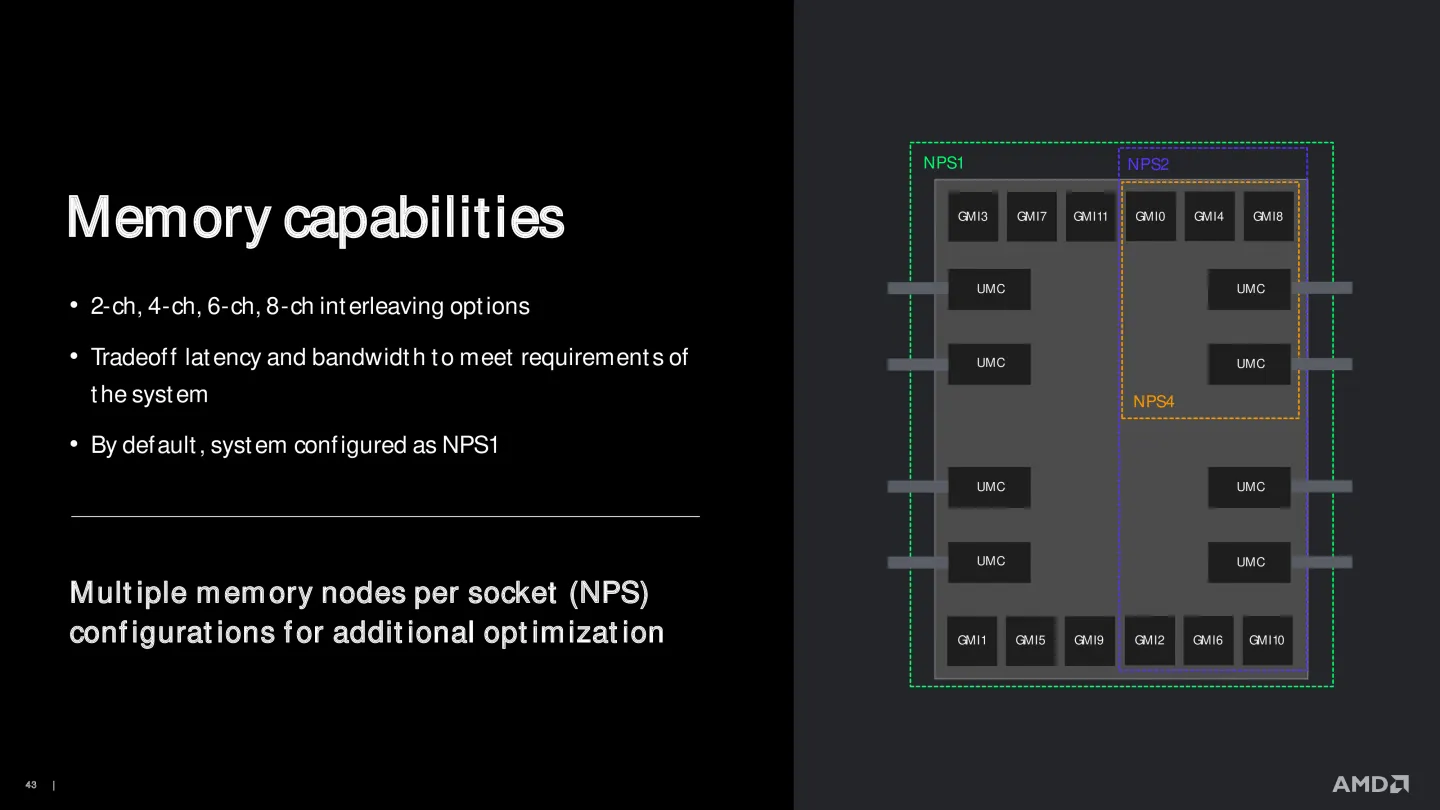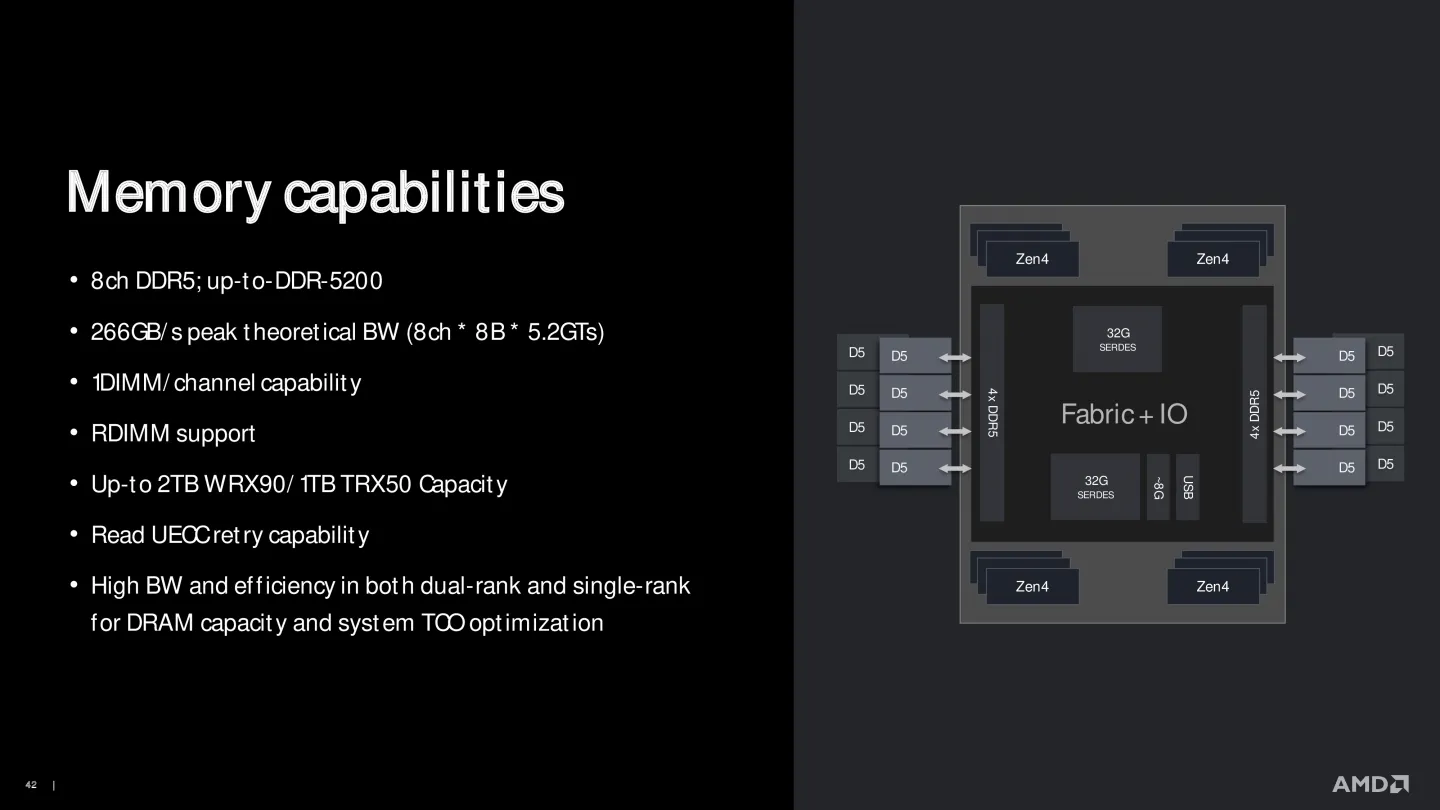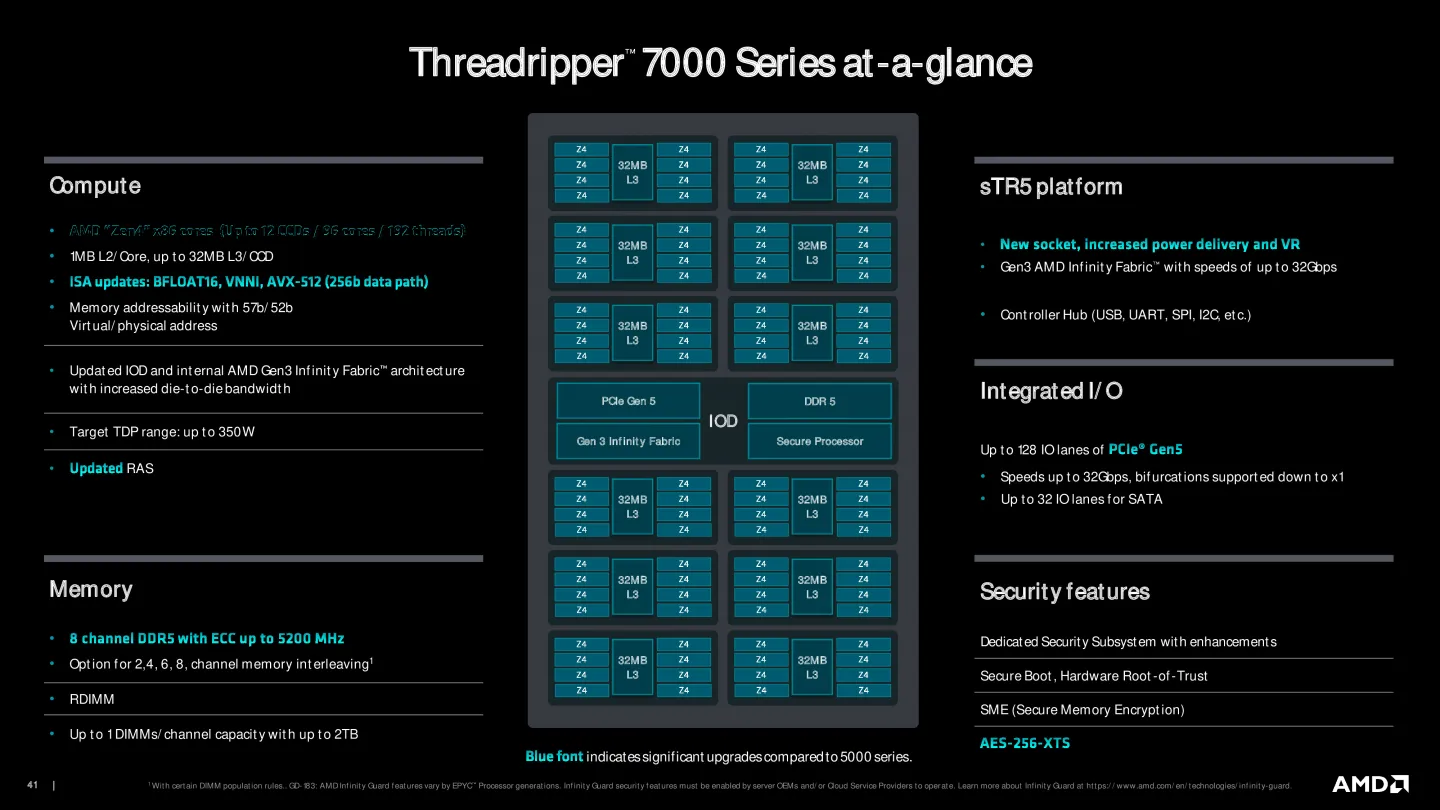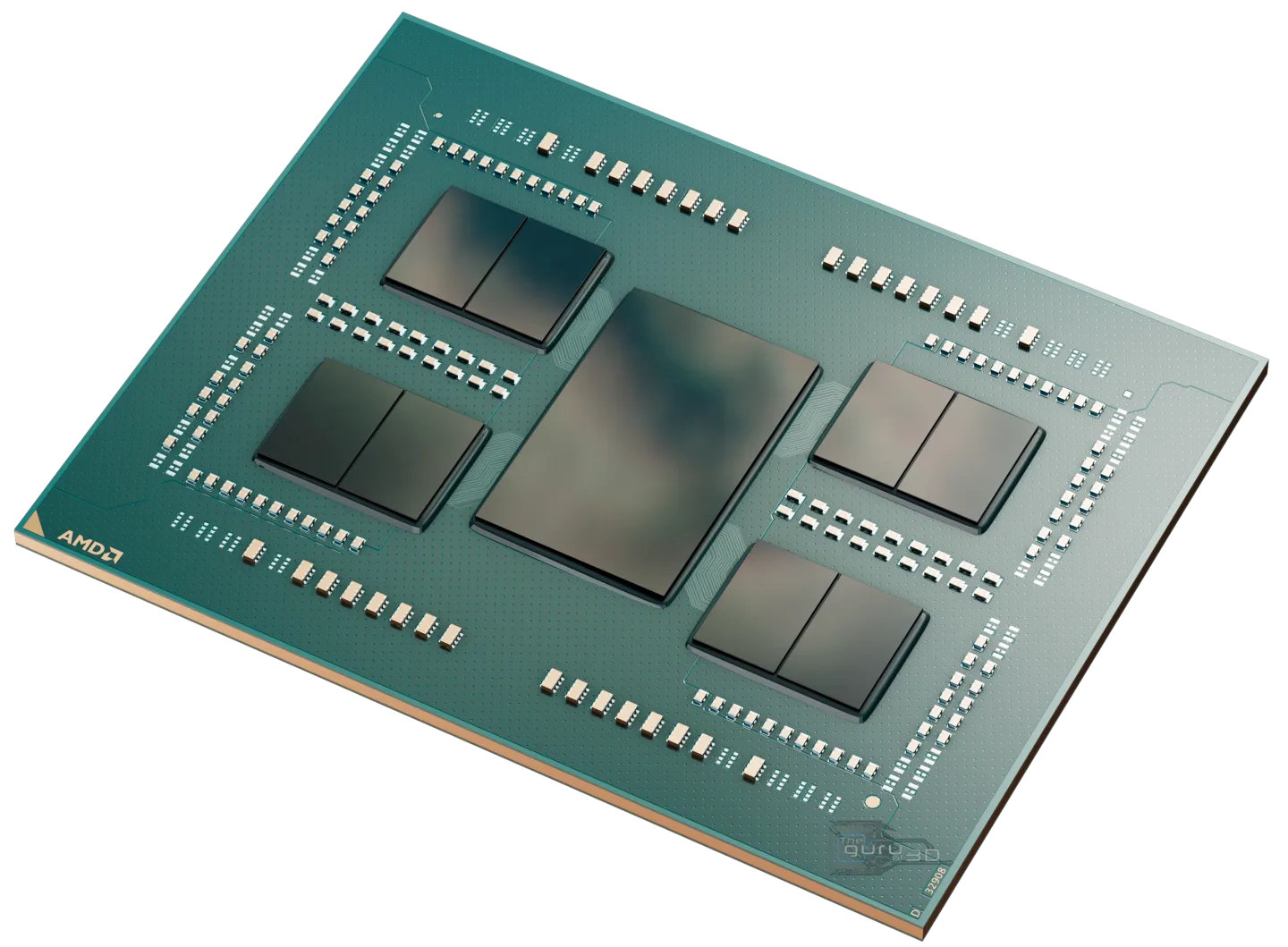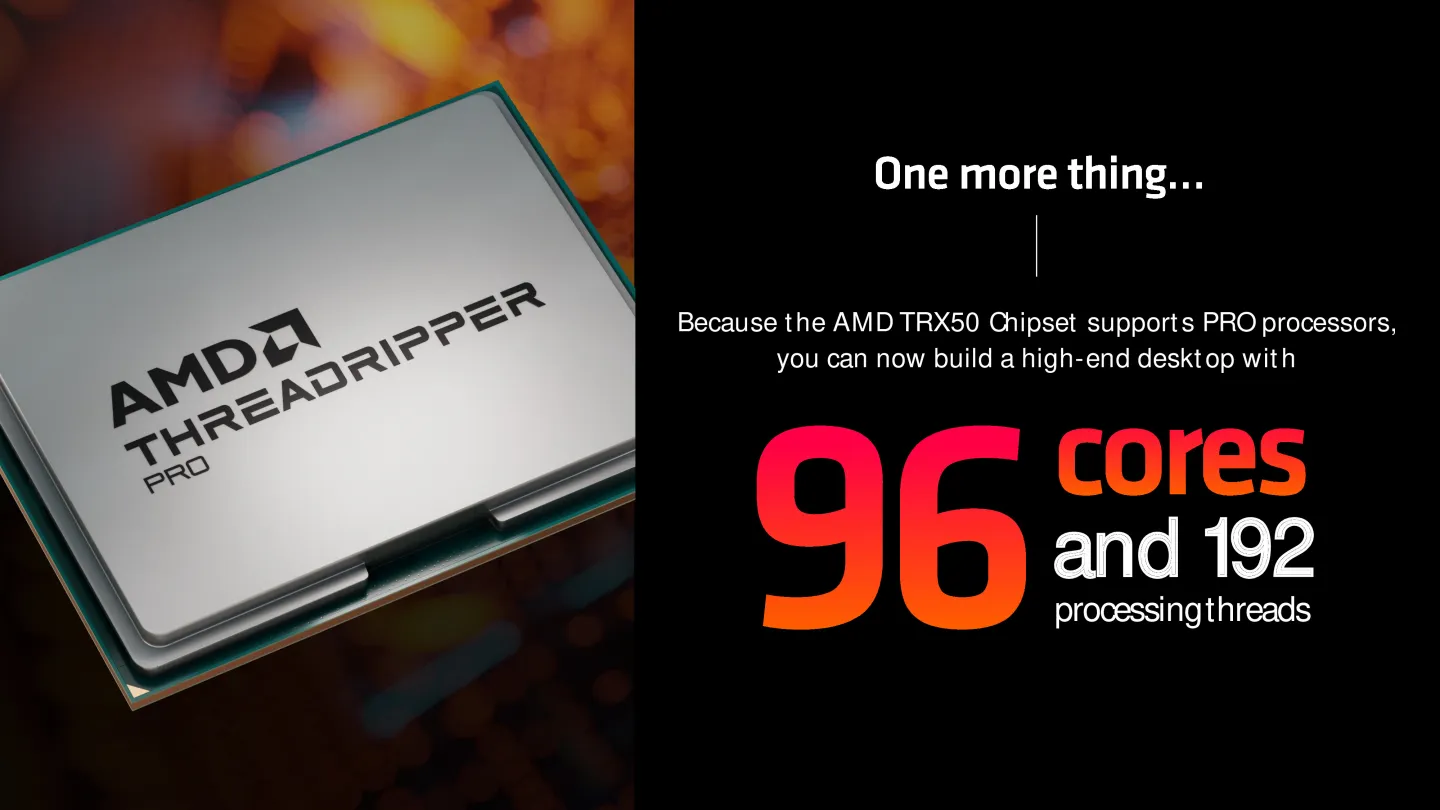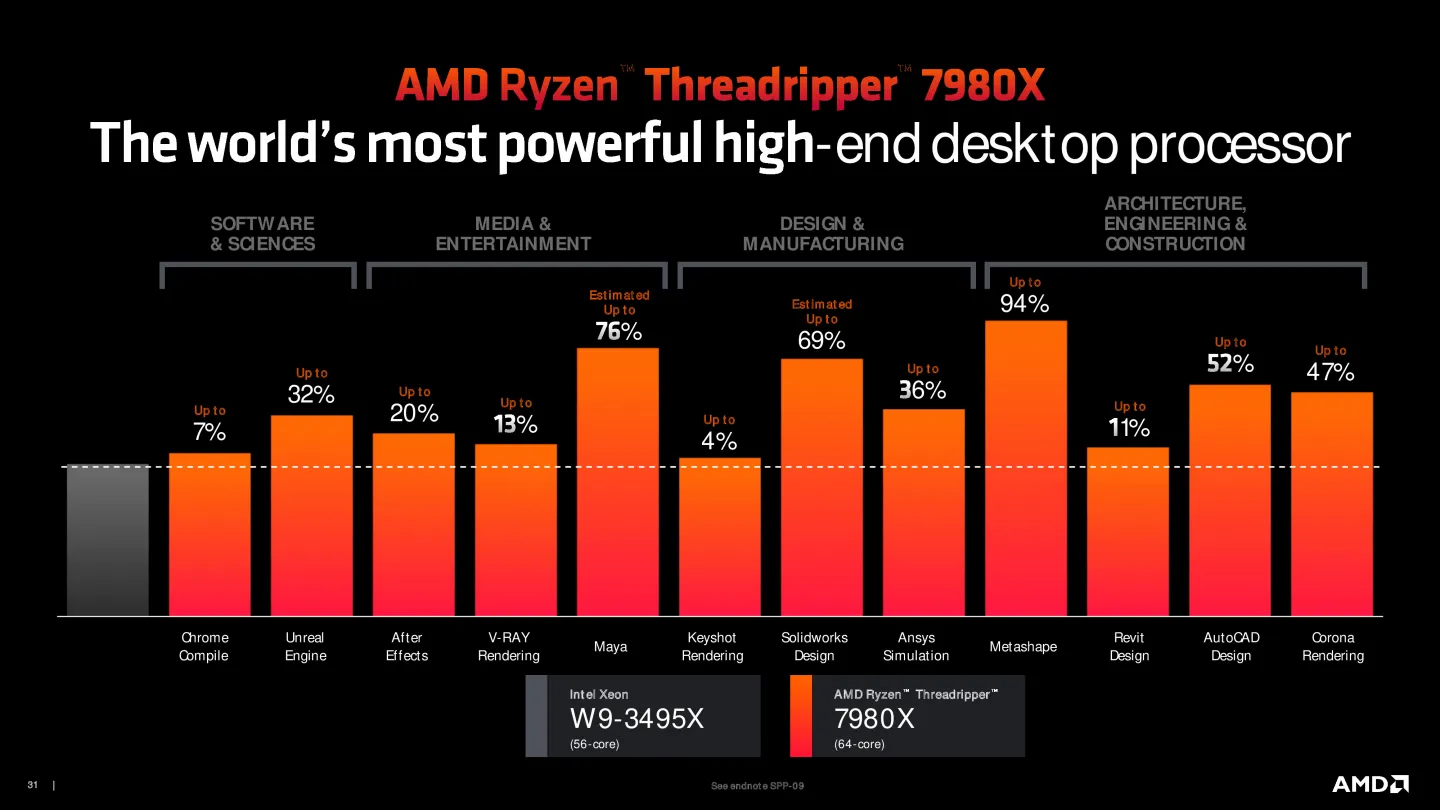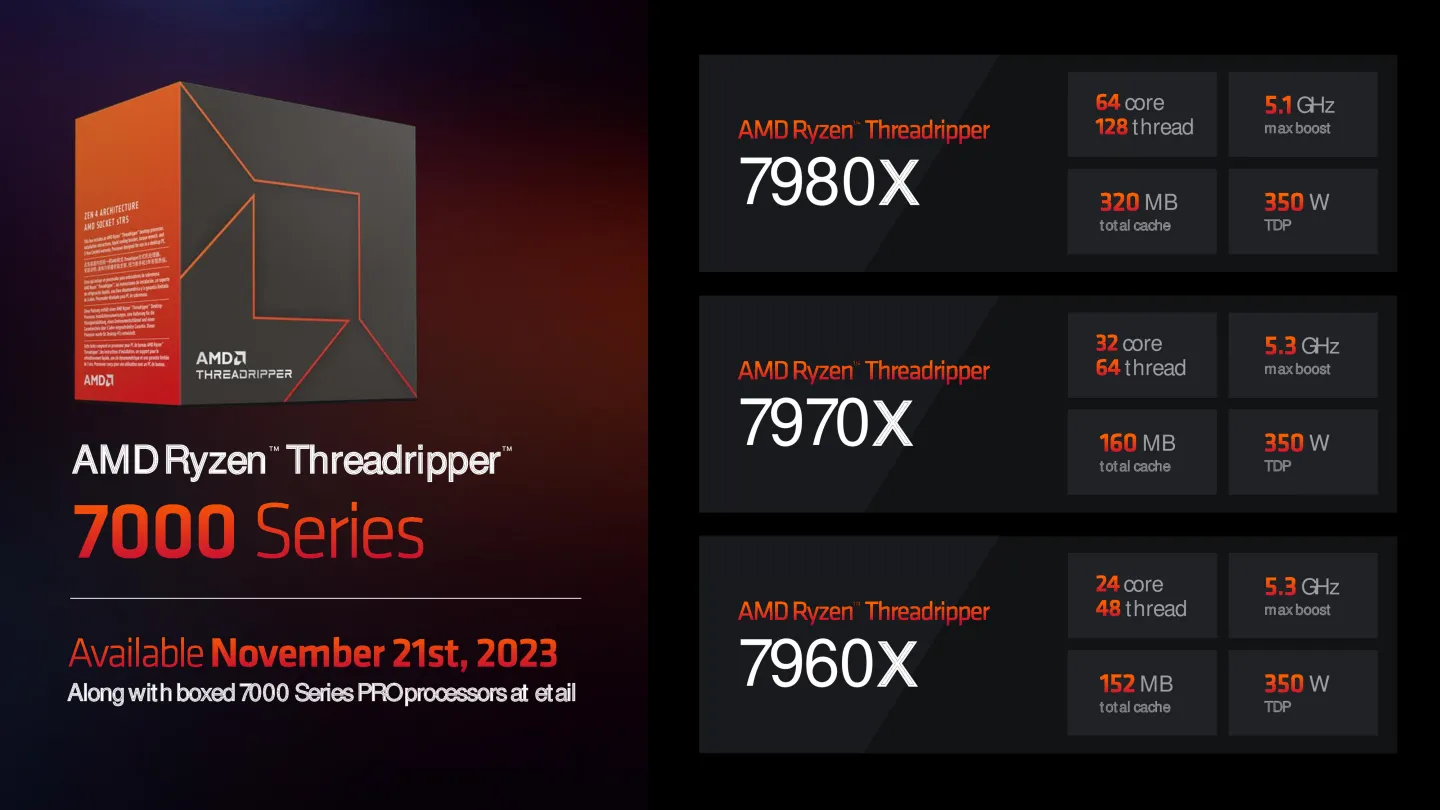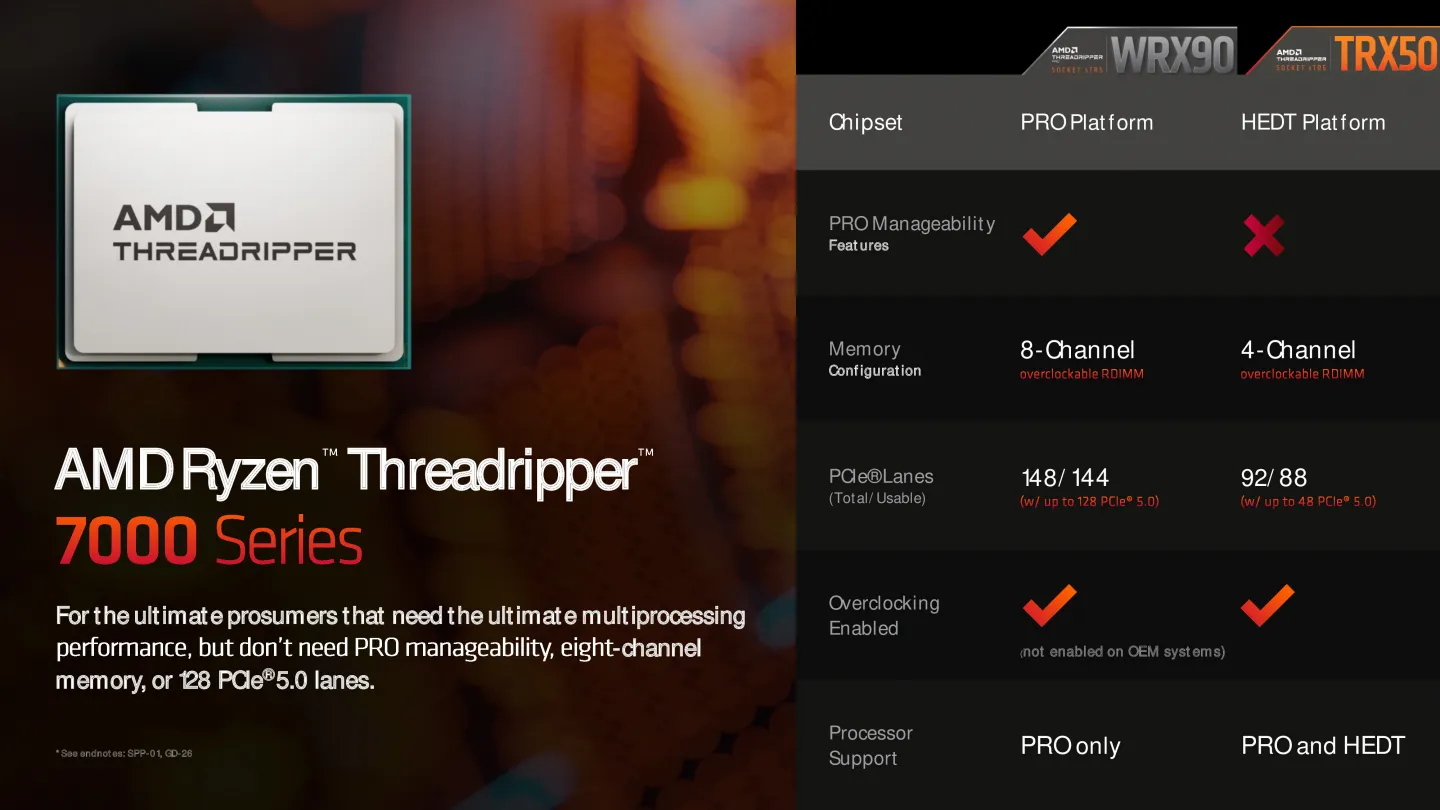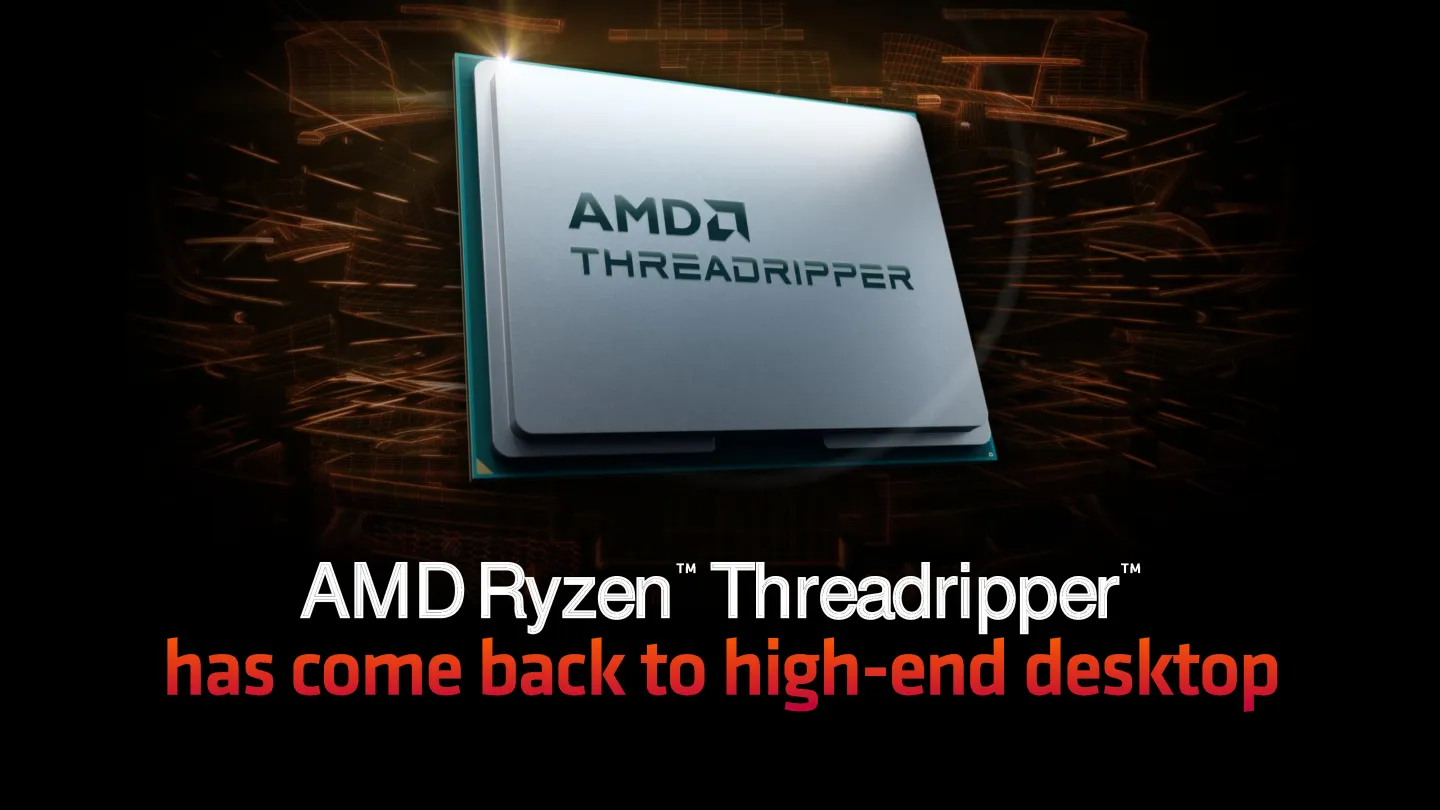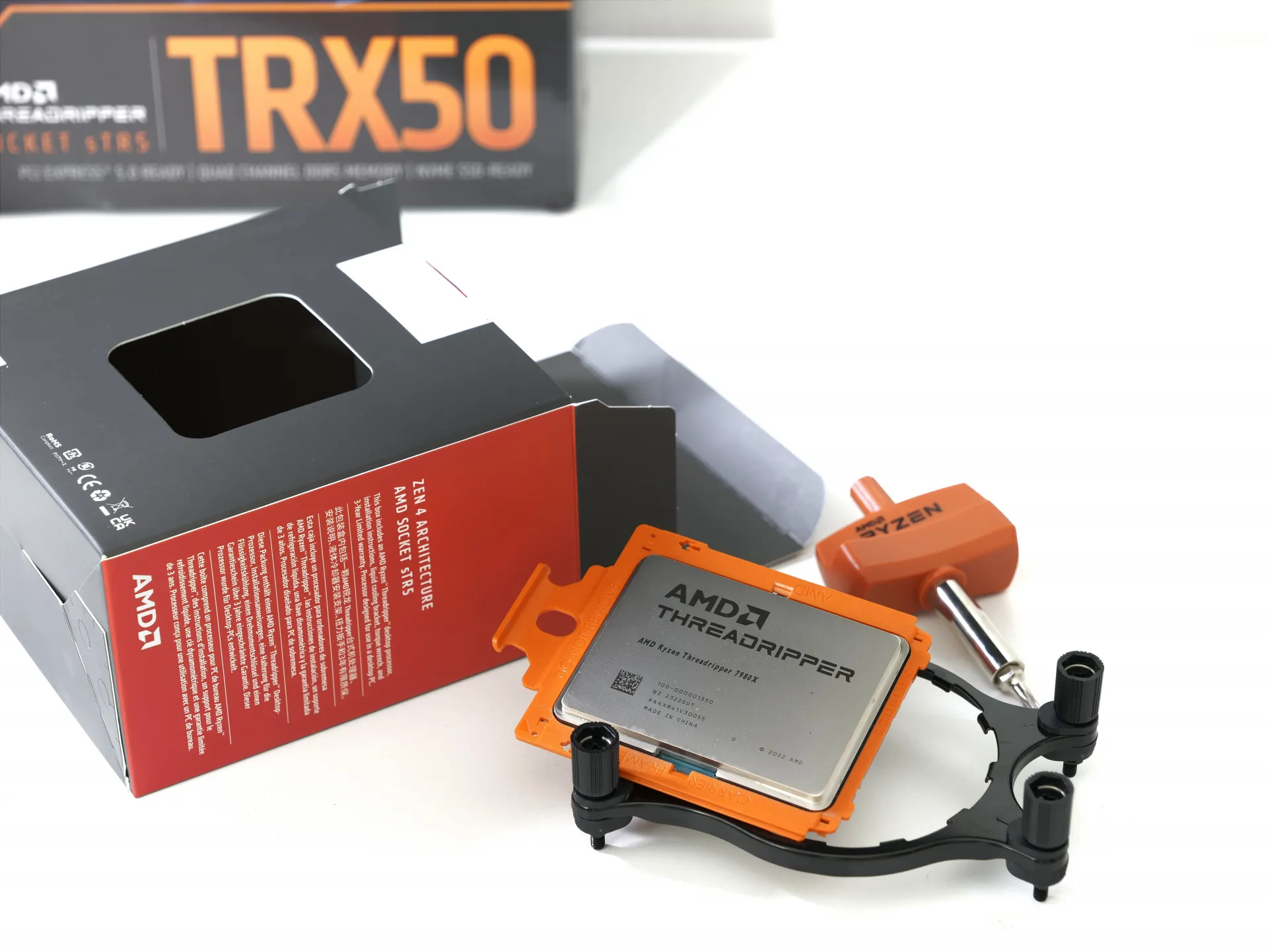A Many Core Introduction
We review, test and analyze the all-new Ryzen Threadripper 7000 series processors, in this review in specific the Threadripper 7980X. The many-core beast is paired with a TRX50 motherboard. We tested the Ryzen Threadripper 7980 with is 64-core based on Zen4 (that's 128 threads thank you very much). And then we also will place a focus on the Ryzen Threadripper 7970 with its 32-cores. We'll look at multithreaded performance, but we will not shy away from game performance either. The AMD Ryzen Threadripper 7000 series has returned with a strong presence, catering not only to workstation requirements but also serving as a High-End Desktop (HEDT) processor. AMD categorises its Threadripper processors into two distinct categories: one tailored for the High-End Desktop (HEDT) market, utilizing the AMD Socket TR5, and the other designed for the workstation sector, falling under the Threadripper PRO 7000WX series, which employs a variation of Socket SP5. Both categories encompass a total of seven processor models, all harnessing the power of AMD's latest Zen 4 microarchitecture.
In the HEDT category utilizing Socket TR5, the lineup includes the Ryzen Threadripper 7960X, Threadripper 7970X, and Threadripper 7980X. The specifications for the 7960X comprise 24 cores, 48 threads, a peak boost frequency of 5.30 GHz, and a combined cache of 152 MB (including L2 and L3). The 7970X boasts 32 cores, 64 threads, the same 5.30 GHz boost frequency, and an increased cache of 160 MB. The most advanced among them, the 7980X, features a remarkable 64 cores, 128 threads, a maximum boost frequency of 5.10 GHz, and a substantial 320 MB cache. Each model within the HEDT range carries a Thermal Design Power (TDP) rating of 350W.
These processors will utilize the new sTR5 socket, a shift from previous socket types that had been the topic of much industry chatter. The series incorporates both the PRO WRX90 chipset for business applications and the HEDT TRX50 chipset, which delineates the motherboard categories.
On the workstation spectrum, the 7000WX series is succeeding the 5000WX series, introducing the flagship 7995WX with 96 cores and 192 threads. This development has led to the rebranding of the 64-core model as the 7985WX. The series also showcases processors with 32, 24, 16, and 12 cores. performance increments stem from a 13% IPC uplift from Zen 4 over Zen 3, an individual core frequency enhancement by 17%, and increased cache sizes. The processors have a TDP set at 350 Watts, marking a 25% increment. Other features include support for 128 PCIe 5.0 lanes and the adoption of 8-channel RDIMM memory, emphasizing DDR5 memory with speeds reaching 5200MHz.
HEDT is back for consumers (that can spare some money)
For the general consumer base, three models are presented: the 24-core Ryzen Threadripper 7960X, the 32-core 7970X, and the 64-core 7980X. Yes, AMD is set to introduce three new models within its Threadripper 7000 series for high-end desktop (HEDT) platforms on November 21st. These models will come with 64, 32, and 24 cores respectively. Based on their assessment of the market's requirements, AMD has opted against offering variations with core counts smaller or larger than these, as seen in their Pro division. Specifically, the desktop Threadripper will be made available with 8 chiplet CCDs, supporting up to 64 cores. In contrast, the Pro version is designed with 12 CCDs, enabling a configuration of up to 96 cores.
All these models maintain a 350W TDP. The PRO lineup mirrors this, with the inclusion of the top-tier 7995WX with 96 cores. A notable enhancement permits users to integrate a Pro chip on a consumer-grade motherboard with the TRX50 chipset, thus facilitating access to the power of 96 cores. Yet, integrating a consumer-grade CPU on a business-centric WRX90 motherboard is not feasible.
Both the Threadripper and Threadripper PROs permit overclocking for the CPU and RAM. PRO CPUs can interface with both PRO and HEDT platforms, whereas the standard Threadrippers are exclusive to the TRX50 platform, bypassing the WRX90. Deploying PRO CPUs on the HEDT platform introduces some constraints, such as the lack of 'PRO Manageability' attributes, a ceiling of 4-channel memory, and a cap of 48 PCIe lanes. A noteworthy point is the anticipated cost-effectiveness of the TRX50 chipset-based motherboards in comparison to the WRX90 ones.
To bridge the difference between mainstream and professional computing environments, and also to achieve cost efficiencies, modifications have been made in some specifications. Specifically, there are now 48 operational PCIe 5.0 lanes, and the storage interface incorporates four channels. These adjustments would lead to more economical motherboards, especially when compared to the Pro solutions that support eight channels and 128 PCIe lanes. According to AMD, the price points of these motherboards should remain substantially below the $1,000 mark.
However, affordability is relative, particularly when considering the costs of the CPUs themselves. The three CPUs are priced as follows (US MSRP before taxes):
- Ryzen Threadripper 7980X is priced at $4,999.
- Ryzen Threadripper 7970X is priced at $2,499.
- Ryzen Threadripper 7960X is priced at $1,499.
